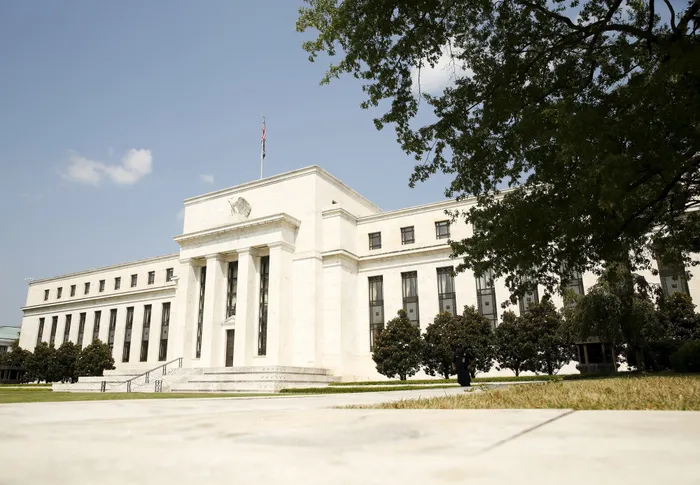US Fed rate decision and fears of global recession creates market havoc

THE Federal Reserve building in Washington, US. Photo, Reuters
Global and domestic financial markets tumbled sharply last week after the sharp increase in the US Federal Reserve (Fed) increased its fund rate by 0.75 percent to 1.75 percent. This was higher than the initially 0.5 percent increase the market had expected. The sharp increase in US inflation rate to 8.6 percent in May is the highest since December of 1981.
It is now expected that the Fed may increase its fund rate by another 0.75 percent at its next meeting in July.
The ongoing Russia/Ukraine war, which has pushed up the oil price to levels beyond $120 (R1 917) per barrel as well as the global shortage of food due to sanctions against Russia and the collapse of Ukraine food exports to Europe threatens world economic recovery after the initial surge in world inflation and interest rate hikes across the globe.
US retail sales fell by -0.3 percent in May (over the previous month, seasonal adjusted) as motor car sales plunged. This news points to a possible US recession as the gross domestic product recorded a negative -1.5 percent growth for the first quarter (two quarters of negative growth is regarded as an economy in recession).
As was expected equities in the US tumbled on the Fed decision. On Wall Street, the S&P500 index lost 5.8 percent during the week and is now 22.9 percent down for the year. The Dow Jones index traded down by 4.8 percent and is now 17.8 percent lower year-to-date. The high-tech index Nasdaq shredded another 4.9 percent for the week, trading 29.63 percent down for the year.
Bitcoin, which a lot of people saw as a hedge against inflation, turned around sharply and decreased by 27 percent last week, trading at $19 338. This is 39.1 percent lower than the $31 784 at the beginning of June and 59.4 percent lower since the beginning of the year’s $47 733.
Domestically, the effect of higher fuel and food prices, as well as increased interest rates still did not affect retail sales. Retail sales increased by 3.4 percent in April against a year ago - much higher than the estimated 1.6 percent and the 1.7 percent hike in March.
Despite this, and with a relative strong rand exchange and higher commodity prices during the first part of last week, share prices on the JSE followed the rest of the world stocks lower in the aftermath the Fed’s interest decision on Wednesday.
The all share index continued its downward correction. After losing 4.4 percent the previous week, the index traded down by another 3.6 percent last week and is now down by 11.3 percent for the year to date. Industrial equities lost 2.5 percent, financials decreased by 2 percent and the Resources 10 index tumbled by more than 6 percent.
The rand exchange rate, usually during times of uncertain equity markets, follows with volatile movements. The rand/$ exchange was still trading last Monday at R15.82 to the dollar, but depreciated quickly before the Fed meeting to R16.22. After the raising of the US Fed rate, the currency appreciated again to trade at one stage on Thursday at R15.76 levels, just to move weaker again to R16.01 on Saturday.
This coming week investors and analysts will turn their attention to the publishing of the South Africa’s leading business cycle indicator today. It is expected that the index had decreased by -1.4 percent during April. The big news for the week and month, however, will be the release of the inflation rate for May 2022 by Statistics South Africa on Wednesday. It is expected that the increase in the consumer price index was only 6 percent and marginally higher than the 5.9 percent rate in April 2022.
If the rate indeed stays “low” on 6 percent (even 6.3 percent) the rand will improve strongly, as this rate is much lower than the US, the UK, and the EU.
On global markets attention will shift towards the testimony of US Fed chairperson Jerome Powell in front of the Senate. The sharp increase in interest rates and the way forward will be high on the agenda. The US will also publish various home sale data. Various other developed market countries will also release their inflation rate figures, especially the UK (expected higher on 9.2 percent) and Canada, (up from 6 percent to 7.2 percent),
Chris Harmse is an economist at CH Economics and lecturer at the School of Commerce at Stadio University.
BUSINESS REPORT
Related Topics: